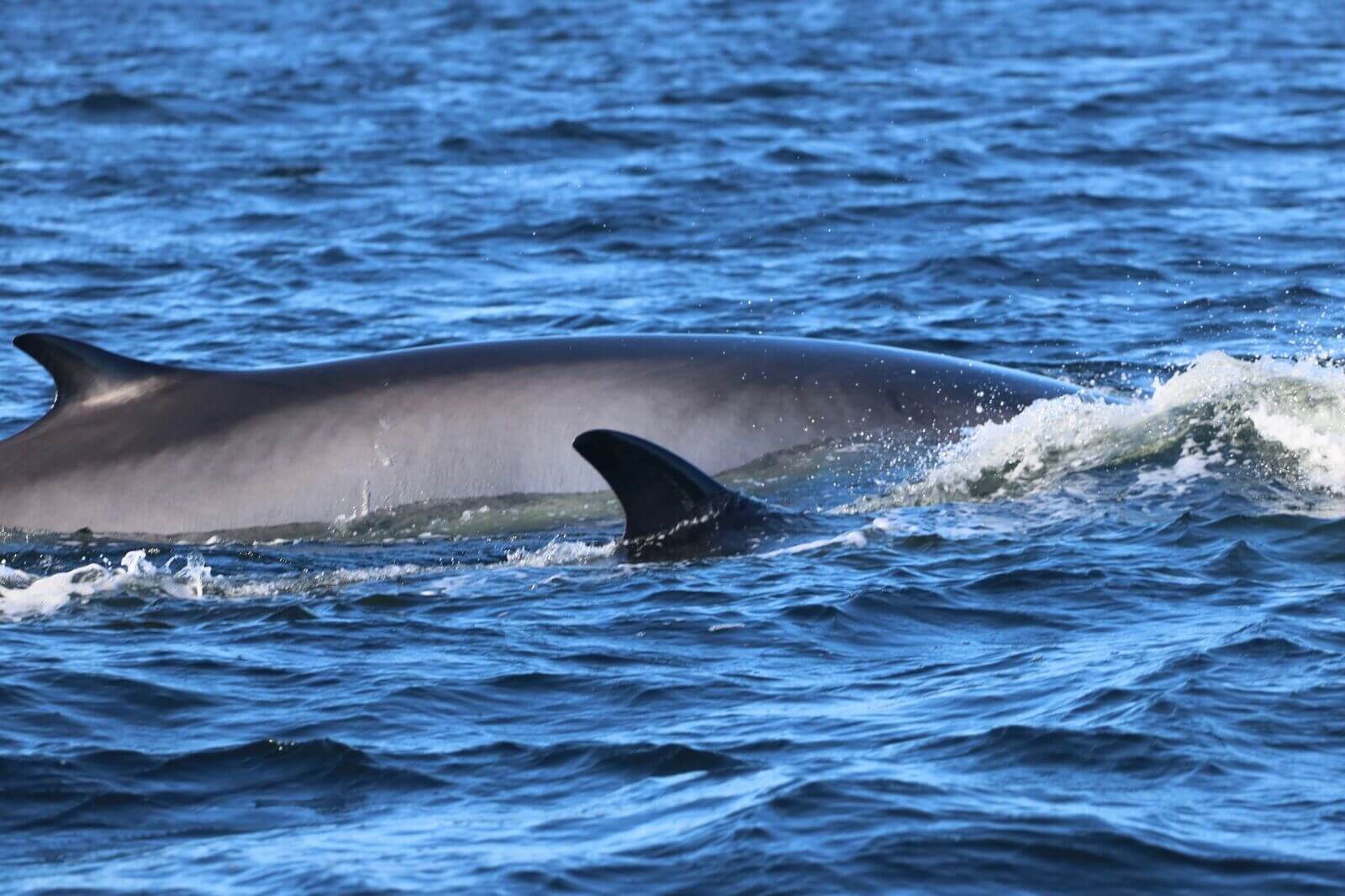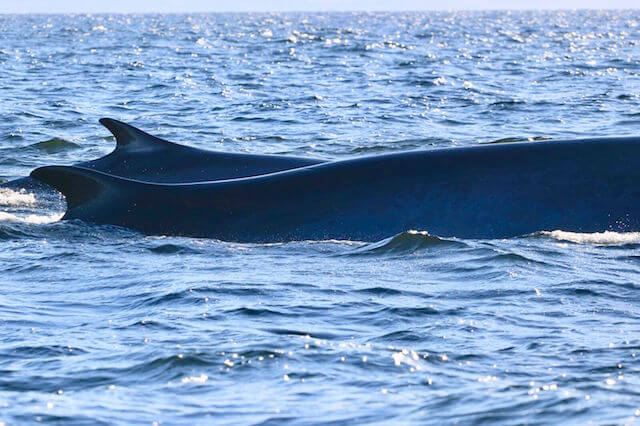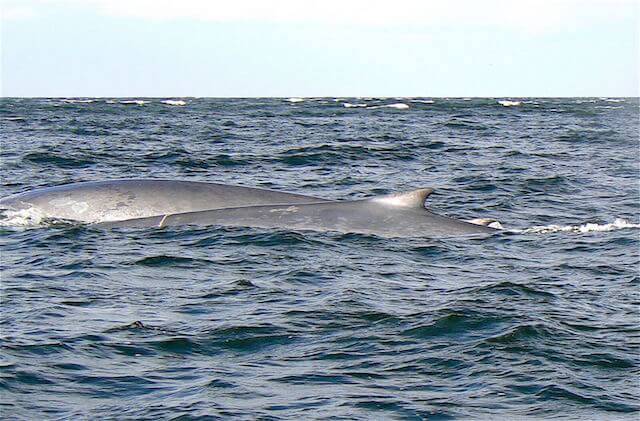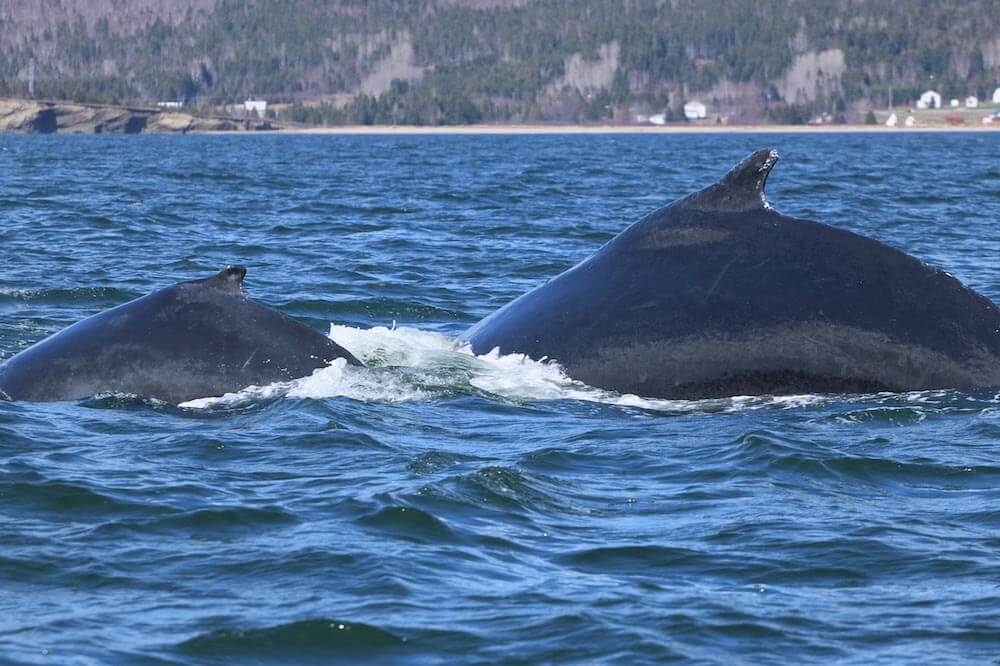The month of May is a bit chilly out on the water and windows of favourable weather are somewhat narrower than they are in summer. We need an extra push to set sail this early in the season. For me, what drives me to return to the water is the greater possibility in this period of observing a mother with her calf returning from their annual migration. The chances of such encounters are also greater when one ventures as close as possible to the gateway of the Gulf of St. Lawrence. That’s why I like to go out to the tip of the Gaspé Peninsula as early in the season as possible, so that the odds are on my side.
On Sunday, May 28, I made my third outing of the spring and my second one off Cap Gaspé. With my captain Pierre, we skirted north of the Forillon cliffs and, over a stretch of 80 nautical miles, were lucky enough to observe four beautiful fin whales, including a duo consisting of a mother with her calf. This is always very moving.
This encounter reminded me of one that occurred on May 12, 2007 in Gaspé Bay, where I had the opportunity to observe a female blue whale (B295) with her calf. This is a rare sight, as the Mingan Island Cetacean Study has only tallied 22 such observations in the Northwest Atlantic in 40 years. This raises many questions.
Also in May, this time on May 18, 2016 to be exact, and also in Gaspé Bay, I crossed paths with the humpback whale Pseudo (H008) with her newborn. This was the fifth time I had seen a humpback mother with her calf, each time in Gaspé Bay.
And, as I mentioned in my most recent Field Notes, on May 14 I photographed a long-finned pilot whale with a calf, which is rare in St. Lawrence waters.
For an observer, there are different levels of satisfaction during encounters with whales for photo-identification purposes. It might be the number of species observed in a given trip, the number of individuals encountered or already known, or the sighting of a rare species, but in my view, nothing can match observing a mother with her calf.
To see them swimming in a sort of gentle and intimate ballet is a emotional experience that allows us to witness the renewal of life in these magnificent creatures.









